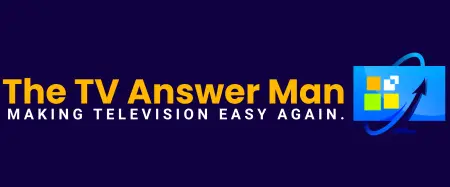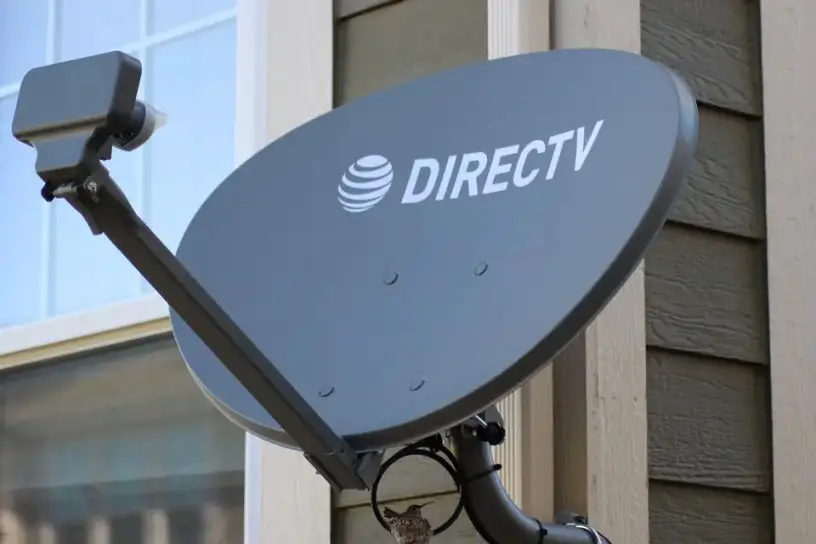By Phillip Swann
The TV Answer Man –Follow on Facebook & X.
Former editor of Satellite DIRECT magazine. Reported on DIRECTV for 29 years.
TV Answer Man, I see in your byline sometimes that you’ve covered DIRECTV for a long time. Can you explain to me why it has lost so many subscribers? I remember when it was the biggest TV service in the world. What happened?! — Frank, Lima, Ohio.
Frank, you are right. I have covered DIRECTV since before it even launched on June 17, 1994. In fact, I traveled to Indianapolis in the summer of 1994 to watch DIRECTV go on sale there, just the second city in the nation to get it. (DIRECTV started in five test markets in the summer of 1994 before going nationwide.)
There were long lines of people waiting for the store to open, and many of them told me they were excited to finally get a serious alternative to cable TV. I decided to buy a DIRECTV dish and receiver myself, brought it back with me and installed it on my balcony in my 18th floor apartment in Alexandria, Virginia. I was the first person in the Washington, D.C. area to have DIRECTV.
Over the years, as a magazine and online journalist, I reported on the meteoric rise of DIRECTV, which eventually became the leading pay TV provider in the nation. I also partnered with Nielsen Media Research in the 1990s to do four comprehensive studies of the DIRECTV audience to determine why Americans were so taken with the ‘little’ dish.
So, yes, I know a little about DIRECTV. And it’s stunning to me as well that the satcaster has lost 13 million subscribers in the last eight years. DIRECTV had roughly 25 million subscribers at one point, more than any satellite or cable operator.
While it’s true that all pay TV operators have lost subscribers in the last several years due to escalating prices, and cord-cutting, DIRECTV’s subscriber decline is unparalleled. By comparison, Comcast’s Xfinity TV service has lost approximately eight million subscribers since 2015 (when AT&T purchased DIRECTV), the second biggest subscriber decline in the pay TV industry.
Why DIRECTV Has Lost So Many Subscribers
There are two major reasons why DIRECTV has lost so many customers over the years.
1. Higher Subscriber Prices
Like other pay TV services, DIRECTV has raised prices every year for the last several years, causing many subscribers to defect to cheaper streaming services which have become available in abundance. The satcaster, of course, had to raise prices because programmers and the networks raised their prices for carrying their signals. But that didn’t stop customers from leaving. They just knew their DIRECTV bills continued to rise and they got sick and tired of it. The why behind the price increases didn’t matter to them.
Why Did AT&T Buy DIRECTV?
2. AT&T
So if every pay TV provider raised prices, why did DIRECTV lose more subscribers than anyone else? Answer: AT&T, which purchased DIRECTV in 2015.
The telco’s executive team never believed in satellite TV. They just wanted DIRECTV’s subscribers, the vast majority of which they believed could be converted to streaming soon after the sale. In 2015, John Stankey, who was then AT&T’s entertainment chief (and later became company CEO), was asked by USA Today what was AT&T’s vision for DIRECTV.
“The simple vision is we want customers to take their premium entertainment experience and enjoy it anywhere,” Stankey told the newspaper’s Ed Baig. “Our job as a company that provides connectivity, whether it’s fixed or mobile, is to make sure that they have that portability. Nobody else has the kind of toolset (and) breath that we now have–scaled content, world class mobile network, broadband network, the technical compatibilities to take all that out over an IP infrastructure. That’s the big strategic thrust.”
Notice that Stankey did not mention the word, satellite. AT&T’s mission was to take DIRECTV’s customers to a streaming platform although the majority of subscribers were content with using a dish, particularly in rural areas. The company’s existing subscribers soon began complaining that AT&T was planning to phase them out and the company’s actions soon reinforced that feeling. In November 2016, slightly more than a year after the AT&T purchase, the company launched DIRECTV Now, a live streaming service which later became DIRECTV Stream. Company executives gushed over DIRECTV Now, saying it would soon replace satellite TV.
AT&T’s master plan, however, failed because the vast majority of DIRECTV’s subscribers did not switch to streaming, at least not to DIRECTV Now (Stream). If they made any switch at all, they decided to drop DIRECTV because AT&T failed to invest in the satellite TV service, often leaving it without new technologies, and new sports channels. AT&T also failed to invest in DIRECTV’s customer service team, which was once pay TV’s best.
Meg James of The Los Angeles Times chronicled this strange strategy in her excellent January 31, 2020 story entitled, ‘Nearly 3 Million Subscribers Ditched DIRECTV Last Year. Will AT&T Do the Same?’ The story illustrates how AT&T decided to spend their research and development dollars on streaming rather than DIRECTV.
“Since AT&T took over, hundreds of (DIRECTV) workers have been cut. Software applications and other functions have been outsourced to IBM and Accenture. The company has been eager to sell smaller assets, including its regional sports networks, and has even considered abandoning its exclusive arrangement with the NFL for the popular NFL Sunday Ticket, according to knowledgeable people who requested anonymity because they’re not authorized to comment publicly. The NFL package — a signature DirecTV offering for 25 years — has become a money loser for AT&T, given the high cost of sports rights,” James wrote.
The plan didn’t work. But to Stankey’s credit, he didn’t pretend that the company had a different strategy in 2015, one that misfired for other reasons. In 2020, Stankey was asked during a session with financial analysts if AT&T believed it still needed DIRECTV.
“You can go back and look at comments I made, I think, very early on and post-transaction of DIRECTV that we didn’t necessarily make that move because we love satellite as a technology,” Stankey told analysts. “We like the customer base. It was an opportunity to move that customer base into the right technology platforms moving forward.”
He’s right. It was an opportunity. But the opportunity expired and AT&T conceded defeat in 2021 and sold a 30 percent stake in the company to the private equity firm, TPG. Now there are rumors that AT&T may entirely disinvest of its DIRECTV holding.
There’s no doubt that DIRECTV would have lost a significant number of subscribers in the last eight years regardless of AT&T’s misfires. But the company’s miscalculation that a significant number of subscribers — many of whom have owned a dish for years and live in areas where high-speed Internet access is limited — would convert to streaming overnight turned a bad scenario into a disaster.

Have a question about new TV technologies? Send it to The TV Answer Man at swann@tvanswerman.com Please include your first name and hometown in your message.
The TV Answer Man is veteran journalist Phillip Swann who has covered the TV technology scene for more than three decades. He will report on the latest news and answer your questions regarding new devices and services that are changing the way you watch television. See the bio for Phillip Swann here.



The other issue is DIrectv has the stigma of charging more than the other streaming services but basically the same price and they offer more channels. The reality that many people do not understand and it is forcing people to change platfors whether it is directv or cable is tv no matter what has become more expensive. Especially when you start adding netflix appletv plus etc etc.